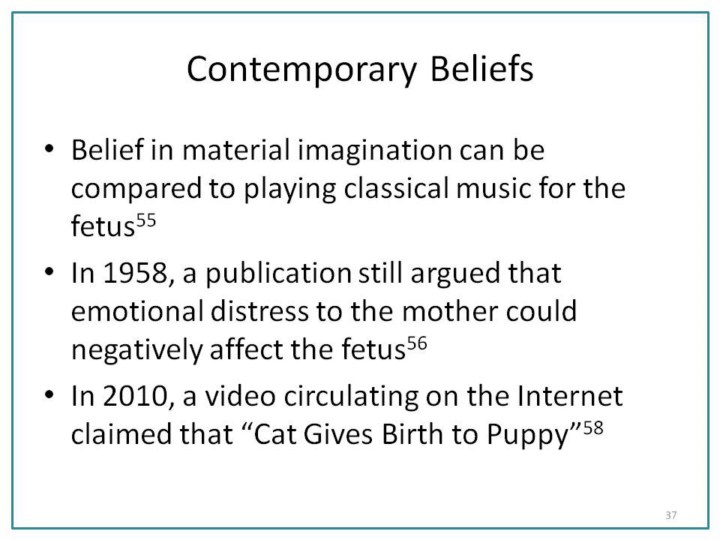| front |1 |2 |3 |4 |5 |6 |7 |8 |9 |10 |11 |12 |13 |14 |15 |16 |17 |18 |19 |20 |21 |22 |23 |24 |25 |26 | 27|28 |29 |30 |31 |32 |33 |34 |35 |36 |37 |38 |39 |40 |41 |42 |43 |44 |45 |46 |review |
 |
In addition, some of our contemporary beliefs seem to echo those from ancient and medieval times. Although most individuals do not believe in maternal imagination, a recent fad has been to broadcast classical music to the fetus. As a society, we continue to believe that the sensory surroundings of the mother will affect her child. A publication from 1958 also cautioned mothers against the dangers of excited emotions during pregnancy. The author claimed that anxiety and high emotions could lead to birth abnormalities.57 Once again, this modern belief can be compared to ancient ideas. In fact, it seems that some ancient ideas have re-emerged in our time. Ancient and medieval authors refuted the idea that one species could give birth to another. However, this idea may have remained within popular folklore. A video circulating on the Internet in 2010 claimed to show a cat who had given birth to a puppy. Although our scientific knowledge would refute this claim, the idea continues to exist. |